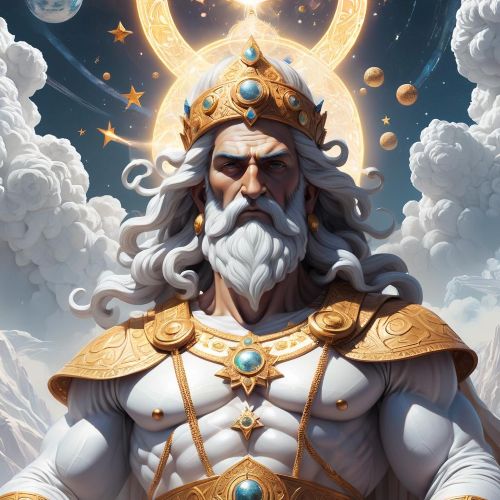Georgian Mythology
Georgian mythology is a rich and diverse tradition shaped by the ancient cultures of the Caucasus and influenced by neighboring civilizations while maintaining its own unique character. Rooted in the rugged mountains, fertile valleys, and sacred sites of Georgia, this mythology reflects the close relationship between the people and their natural surroundings. Long before Christianity became the dominant faith in Georgia in the 4th century, the land was alive with deities, spirits, and heroes whose stories explained the mysteries of life, death, and the cosmos. Though many of these traditions were later absorbed into Christian practices, the myths remain an integral part of Georgia’s cultural heritage and continue to inspire storytelling, festivals, and national identity.
At the heart of Georgian mythology were deities connected to nature and human fate. Ghmerti, the supreme god, was regarded as the creator and protector, while other gods oversaw vital aspects of life such as fertility, agriculture, the hunt, and the weather. Among the most well-known figures is the goddess Dali, a radiant and powerful huntress who ruled over the animals of the mountains and rewarded or punished hunters according to their behavior. Her beauty and dangerous allure made her a central figure in countless tales. Another important deity was the sun god Mze, representing life and light, while spirits tied to rivers, forests, and mountains populated the landscape, ensuring that every part of nature was seen as sacred and alive with power.
Georgian mythology is also filled with heroic figures and legendary narratives that mirror the challenges and values of the people. Amirani, the Georgian counterpart to the Prometheus figure, is one of the most famous heroes. His defiance of the gods and subsequent punishment reflect timeless themes of human ambition, resilience, and suffering. Epic stories often feature giants, dragons, and other supernatural beings that heroes must outwit or defeat, symbolizing the eternal struggle between order and chaos. These myths also served a moral purpose, teaching lessons about bravery, humility, respect for nature, and the importance of community. Passed down through oral tradition, they were not only tales of wonder but also guides for living in harmony with the harsh yet beautiful Georgian landscape.
In modern times, Georgian mythology continues to resonate strongly within cultural traditions, literature, and the arts. Many festivals and folk practices still contain echoes of ancient beliefs, particularly in rituals tied to agriculture, hunting, and seasonal cycles. The myths of Dali, Amirani, and other legendary figures are frequently retold in modern Georgian literature, theater, and visual art, symbolizing both the endurance of ancient traditions and their relevance to contemporary life. With growing global interest in mythologies from around the world, Georgian mythology is being recognized for its unique stories, striking deities, and profound symbolic connections to nature. It stands not only as part of Georgia’s national identity but also as an essential contribution to the global tapestry of myth and legend.


